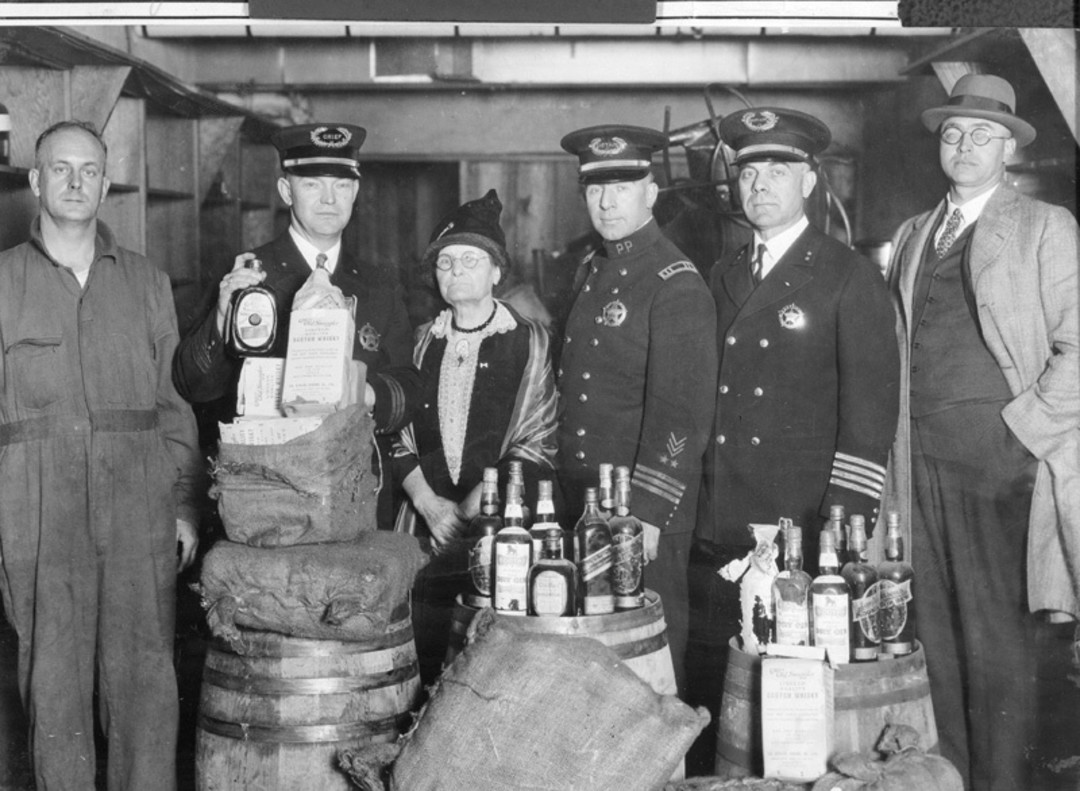100 Years Ago This Month, Oregon Made the Worst Decision Ever

Photograph courtesy the Oregon Historical Society #bb011621, with permission from the Oregonian
On a cold January morning in 1914, Copperfield, Oregon—a remote Snake River town packed with saloons—awoke to the marching boots of the Oregon National Guard. Gov. Oswald West had sent troops to tame a settlement rife with prostitution, gambling, and corruption, all lubricated with booze. Alcohol prohibition was a well-aged idea, first pushed in Oregon as early as 1844. But the Copperfield raid showed matters were foaming to a head. By the end of 1914, Oregon would ban demon drink statewide.
Prohibition surged on a swell of do-gooder sentiment, as newcomers scorned the region’s rowdy ways. “The stench of stale beer and whiskey often mixed with the nauseating smell of vomit,” recalled a schoolteacher of her Portland arrival in 1902. “Drunken staggering men blocking my way turned my stomach.”
As the new century unfolded, Oregon’s “dry” forces coalesced with national allies. The Methodist Church sent more than 700 ministers to canvass the West Coast in support of Prohibition, and Governor West—a Democrat, today remembered as a protector of the state’s public beaches—railed against alcohol. “Whenever I think of the devil, I think of booze,” he wrote in 1914. When renowned defense attorney Clarence Darrow spoke passionately on behalf of Portland drinkers in 1910, his words amounted to a mere drop in the political barrel.
The tipping point came in 1912, with enfranchisement of Oregon’s women, the backbone of the dry cause. “These two political movements—Prohibition and the women’s right to vote—are really married to each other,” says historian Doug Kenck-Crispin. “It’s about married men going to the bars and blowing their paycheck on booze.” On November 3, 1914, Prohibition passed statewide, 136,842 yes to 100,362 no. On December 4, West triumphantly made Oregon dry for the next two decades.
Bootleggers and organized crime arrived almost immediately. In Portland, the price of whiskey purportedly fluctuated according to how many cases the police let “disappear” from their storeroom. By 1933, the dry experiment had proven a national failure, and within days of the constitutional amendment repealing federal Prohibition, the Oregon Liquor Control Commission reintroduced Oregon to its favorite elixirs.
Even so, some damage was done. Of the state’s 48 pre-Prohibition breweries, only the Blitz/Weinhard Company survived by selling sodas, near-beers, and syrups. The once-vibrant wine industry would not revive until the 1960s. And Copperfield? Today, its former site is a picnic spot—the view best enjoyed with a chilled pinot gris, perhaps?
